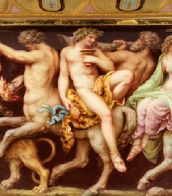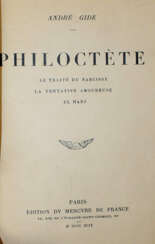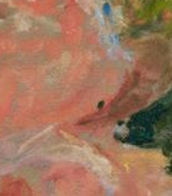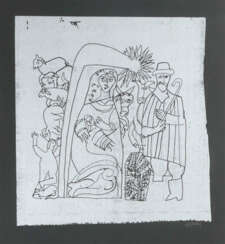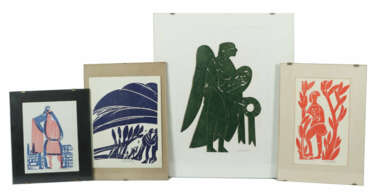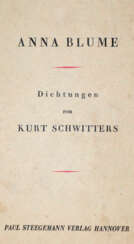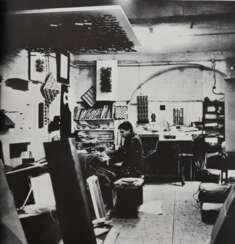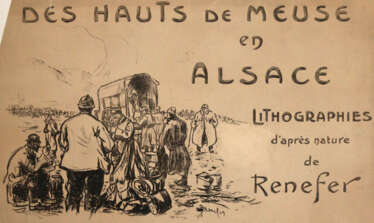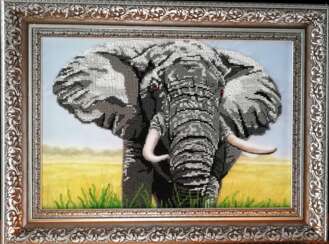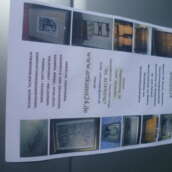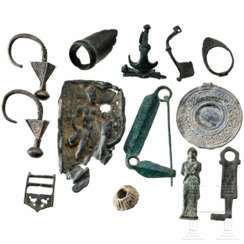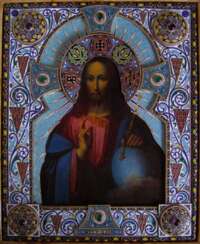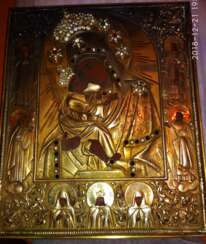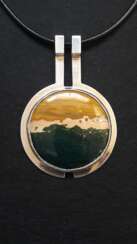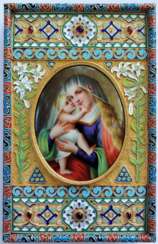38 Items by auctions and galleries:
modernes silber
"Elefant"
Nataliia Kircheva (b. 1975)  Shop Kircheva Nataliia
Shop Kircheva Nataliia

Nataliia Kircheva
04.06.1975
Germany
Ich sticke Bilder mit Perlen, handgemacht. Ich binde Bilder von tschechischen Qualitätsperlen ein und erstelle Illustrationen zu verschiedenen Themen. Ich sticke auch Perlen auf Ihre Bestellung von Fotos nach Ihren Wünschen.

Artist shop
Kircheva Nataliia
Germany
Number of products: 3
"Elefant"
Nataliia Kircheva (b. 1975)  Shop Kircheva Nataliia
Shop Kircheva Nataliia

Nataliia Kircheva
04.06.1975
Germany
Ich sticke Bilder mit Perlen, handgemacht. Ich binde Bilder von tschechischen Qualitätsperlen ein und erstelle Illustrationen zu verschiedenen Themen. Ich sticke auch Perlen auf Ihre Bestellung von Fotos nach Ihren Wünschen.

Artist shop
Kircheva Nataliia
Germany
Number of products: 3
Choke rNecklace
Elena Zimovets (b. 1956) 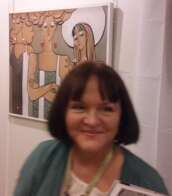 Shop Zimovets Elena
Shop Zimovets Elena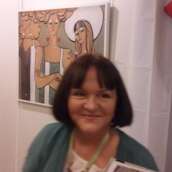

Elena Zimovets
08.05.1956
France
Professional certified fashion designer, painter, illustrator and graphic designer.
Graduated from the Moscow Textile University named after Kosygin, Faculty of Applied Arts (since 1982).
From 1982 to 1993 she worked at the House of Models as the chief designer and designer: she created collections of ready-to-wear and Haute Couture clothes.
From 1999 to 2002 - Lecturer at the International Private Academy of Audiovisual Arts in disciplines: painting, drawing, composition, modeling and costume history and color graphics.
In 2008 in Portugal (Portimao) a personal exhibition "In harmony with the soul" was successfully held,
The exhibition was widely covered by television, radio and the press.
Member of the GemlucArt Monaco community.
Recent exhibitions:
2016 - Suquet des arts, Cannes, France
2016 - GemlucArt, Monte Carlo Contemporary Art Fair, Monaco
2017 - GemlucArt, Monte Carlo Contemporary Art Fair, Monaco
2018 - "Russian Seasons Club" - Exhibition in Gray d'Albion, Cannes.
2019-2020 - Personal exhibition in Grasse. Paintings are in private collections.
About creativity:
“I have developed my own painting technique on transparent fabrics such as organza. This is not batik, but color graphics and painting on fabric. I also work in other techniques and with different materials: pastel, acrylic, oil, watercolor, etc.
Recently, I have been researching movement and pulsation: forms, lines and points in abstract painting and in space, as well as their architectonics. I developed my own technique and style, working with line and point, namely with drops of paint, which I then stretch into lines of different thicknesses. This is my conceptual idea for my abstract painting. Its origin lies in my works in the style of Khokhloma and Zhostovo, on which I worked in the 70s of the 20th century.

Artist shop
Zimovets Elena
France
Number of products: 12
Lot 145 Heinz Mack (1931 Lollar) (F)
Heinz Mack (1931) 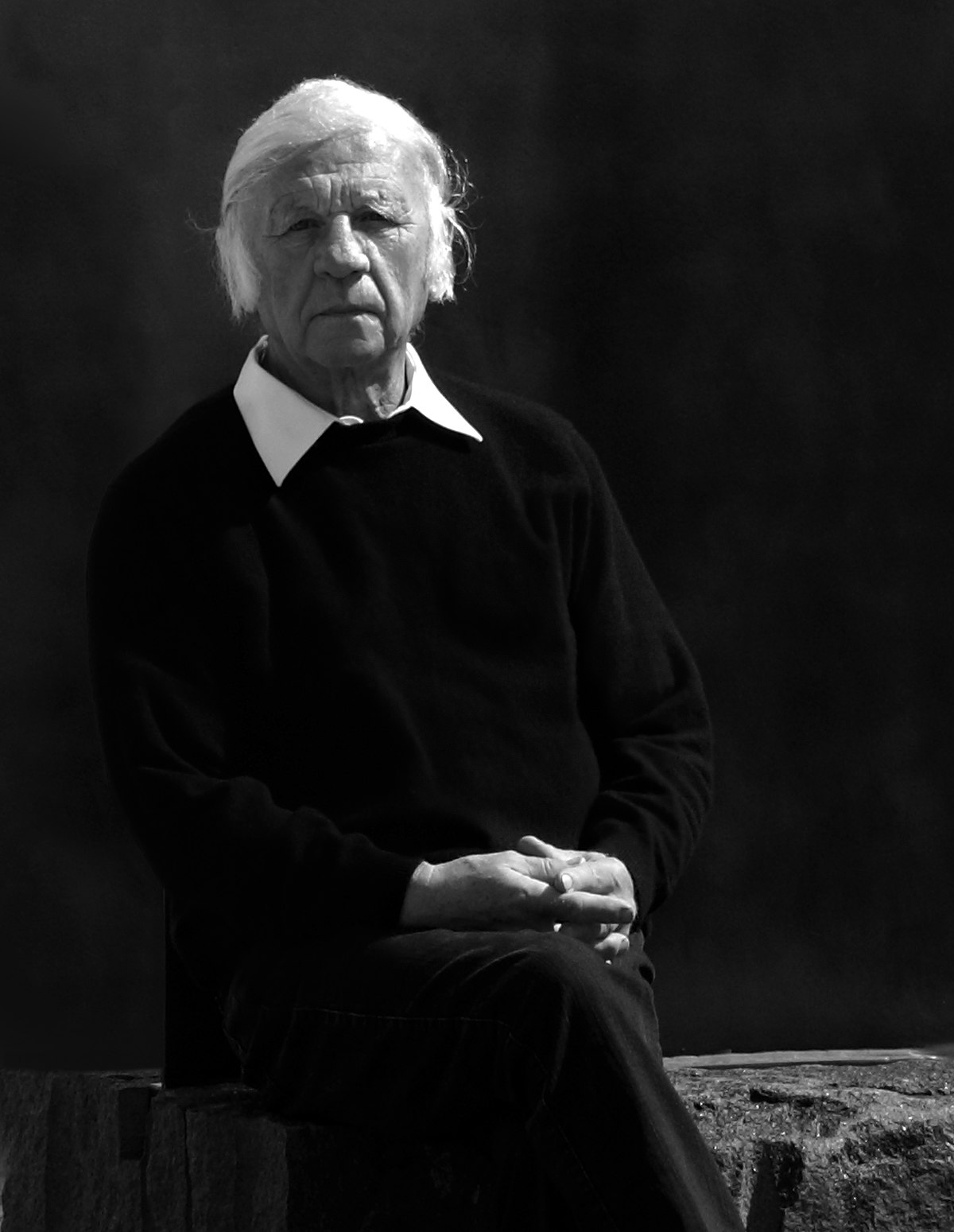 Moderne & Zeitgenössische Kunst | Schmuck & Luxusuhren
Moderne & Zeitgenössische Kunst | Schmuck & Luxusuhren 

Heinz Mack
08.03.1931
Germany
Heinz Mack is a German artist. Together with Otto Piene he founded the ZERO movement in 1957. He exhibited works at documenta in 1964 and 1977 and he represented Germany at the 1970 Venice Biennale. He is best known for his contributions to op art, light art and kinetic art.

WETTMANN | Auktionshaus an der Ruhr
Moderne & Zeitgenössische Kunst | Schmuck & Luxusuhren
Date: 02.12.2025 18:00 UTC +01:00
Number of lots in the catalog: 197
Икона "Господь Вседержитель" в драгоценном серебряном окладе.
Martin Koval (b. 1980)  Shop Koval Martin
Shop Koval Martin

Martin Koval
09.07.1980
Ukraine
I continue the traditions of jewelry art in the third generation of our family. I create exclusive jewelry in various techniques of fiery enamel.

Artist shop
Koval Martin
Ukraine
Number of products: 10
Кулон
Natalia Vavilina (b. 1967)  Shop Vavilina Natalia
Shop Vavilina Natalia

Natalia Vavilina
03.04.1967
Moldova
Natalia Vavilina
Architect, designer, artist
date of birth 03/04/1967
mob.Tel. + 373 68982998
e-mail: [email protected]
e-mail: [email protected]
http://designervavilina.wix.com/designervavilina
http://designervavilina.weebly.com/
https://www.facebook.com/designervavilina/
Member of the Union of Artists of Moldova
.
2001-2008. Head of department "interior design" Arts Faculty. Senior lecturer. Academy of Music, Theatre and Fine Arts of the Republic of Moldova.
2006 - present Lecturer at the Department superio "interior design" Arts Faculty. Academy of Music, Theatre and Fine Arts of the Republic of Moldova

Artist shop
Vavilina Natalia
Moldova
Number of products: 5
Икона Божьей матери Елеуса
Martin Koval (b. 1980)  Shop Koval's Jewellery
Shop Koval's Jewellery

Martin Koval
09.07.1980
Ukraine
I continue the traditions of jewelry art in the third generation of our family. I create exclusive jewelry in various techniques of fiery enamel.

Shop
Koval's Jewellery
Ukraine
Number of products: 10


